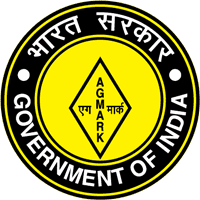QUALITY ASSURANCE Standards -Dairy Engineering-Technical Superintendent Milk Marketing Federation ltd
QUALITY ASSURANCE
HACCP, GMP, IS0 standards, FSSAI, AGMARK, MMPO, PFA:
HACCP, GMP, IS0 standards, and FSSAI are QA systems.
Quality assurance (QA) is a way of preventing mistakes or defects in manufactured products and avoiding problems when delivering solutions or services to customers; which ISO 9000 defines as “part of quality management focused on providing confidence that quality requirements will be fulfilled”.
Quality assurance comprises administrative and procedural activities implemented in a quality system so that requirements and goals for a product, service or activity will be fulfilled.
It is the systematic measurement, comparison with a standard, monitoring of processes and an associated feedback loop that confers error prevention.
This can be contrasted with quality control, which is focused on process output.
Benefits of following quality assurance:
• Reduction in unit cost of production
• Reduction in wastage and scrape
• Less complaints from customer
• Avoids repeated inspection
• Increases production since rejection reduces
• Efficiency of unit goes up
• Management gets proud place in society
• Boost employee’s morale
• Reduction in production bottlenecks
HACCP, GMP, IS0 standards, FSSAI, AGMARK, MMPO, PFA:
HACCP, GMP, IS0 standards, and FSSAI are QA systems that focus on processes;
i.e. process organisation, process control and process improvement.
Quality systems are of two types – obligatory and voluntary. HACCP is obligatory in developed countries for food sectors to ensure safe products to consumers.
Other quality management systems, such as ISO, can be used in enterprises on a voluntary basis.
However, many food processing and packaging companies are trying to move towards world-class quality by building a solid structure using a number of systems together, such as GMP, HACCP, and the ISO family, on a voluntary basis.
HACCP:
HACCP (Hazard Analysis of Critical Control Point) is a food safety program that was developed nearly 30 years ago for NASA, based on regulations of the United Nations Codex 19 Alimentarius Commission (CAC) to ensure the safety of food products that were to be used by the astronauts in the space program.
It is a systematic approach to the identification, evaluation, and control of steps in food manufacturing, which are critical to product safety.
It identifies risks in the production processes that can lead to unsafe products, and designs measurements to reduce these risks to
an acceptable level.
The HACCP system establishes process control through identifying points in the production process that are most critical to monitor and control.
The system can be applied to control any stage in the food system, and is designed to provide enough feedback to direct corrective activities.
HACCP is guided by seven principles.
Seven principles of HACCP :
1. Identify the potential hazard(s) associated with food production at all stages, from growth, processing, manufacture and distribution, until the point of consumption.
Assess the likelihood of occurrence of the hazard(s) and identify the preventive measures for their control.
2. Determine the points/procedures/operational steps that can be controlled to eliminate the hazard(s) or minimize its likelihood of occurrence – (Critical control point (CCP)).
A step means any stage in food production or manufacture including agricultural practice, raw material receipt, formulation, processing, storage, transport, retail and consumer handling.
3. Establish targets and tolerances which much be met to ensure that each CCP is under control
4. Establish a monitoring system to ensure control of CCP by scheduled testing or observations
5. Establish the corrective action to be taken when monitoring indicates that a particular CCP is not under control
6. Establish procedures for verification which include supplementary tests and procedures to confirm that the HACCP system is working effectively
7. Establish documentation concerning all procedures and records appropriate to these principles and their application Monitoring of CCPs is done best by using indicators that can be measured easily.
GMP:
Good Manufacturing Practice (GMP) contains ten principles that introduce employees to critical behaviours to maintain good manufacturing practices in plants.
GMP denotes all the actions that must be undertaken and conditions to be fulfilled in order to ensure that production of food, wrapping materials and other materials expected to be in contact with food, is executed in a proper way to guarantee safe end products and safe food for human consumption.
GMP deal with contamination
• by people
• by food materials
• by packaging materials
• by hazardous materials
• by miscellaneous materials
A) Precautions to be taken to avoid contamination by handling personnel
The food handling personnel should:
• Bath daily
• Use no perfume, aftershave, fragrant creams
• Use no jewellery
• Use no false nails or nail polish
• Trim short fingernails
• Use metal detectable bandages covered with gloves
• Not eat/ drink/use chewing gum while on duty
• Wash their hands thoroughly when they enter food handling areas before starting work and after handling contaminated materials and after breaks and after using toilet facilities
B) Precautions to be taken to avoid contamination from ingredients
• Keep direct hand contact with the ingredients to a minimum
• Check ingredients for expiration dates to ensure that fresh ingredients are
used.
• The ingredients should always be kept covered.
C) Precautions to be taken to avoid contamination from premises/ environment
• Keep unscreened doors and windows closed.
• Report any pests or evidence of pests such as flies, insects, mice droppings.
• Keep contact surfaces clean and free of contamination from tools, cords, cleaning utensils, machine parts, lubricants and paper
• Clean all spills promptly
• Keep everything off the floor and the area clean and floors swept.
• Work areas should be cleaned regularly throughout the shift.
• Keep your immediate working area swept or dust mopped. Wipe or mop
up spilled liquids promptly.
• Scrape the floor around the work area after completing a job.
• Leave your work area clean at the end of your shift.
ISO:
ISO (International Organization for Standardization) is the world’s largest developer of voluntary International Standards providing benefits for business, government and society.
ISO standards ensure the safety and quality of products to protect
consumers worldwide.
They address issues of concern to consumers such as nutritional value, labelling and declaration, taste, hygiene, genetically modified organisms, limits on additives, pesticides, contaminants, and so on.
They facilitate trade, spread knowledge, and share technological advances and good management practices.
ISO standards make industry more competitive and promote global trade.
They disseminate best practice and innovations so that industry does not need to reinvent the wheel, while at the same time facilitating market access to the latest technologies.
FSSAI:
FSSAI (Food Safety and Standards Authority of India)has been established under Food Safety and Standards Act, 2006, which consolidates various acts & orders that have hitherto handled food related issues in various Ministries and Departments.
FSSAI has been created for laying down science based standards for articles of food andto regulate their manufacture, storage, distribution, sale and import to ensure availability of safe and wholesome food for human consumption.
Today FSSAI has replaced PFA and is made compulsory
Functions performed by FSSAI:
• Framing of Regulations to lay down the Standards and guidelines in relation to articles of food and specifying appropriate system of enforcing various standards.
• Laying down mechanisms and guidelines for accreditation of certification bodies engaged in certification of food safety management system for food businesses.
• Laying down procedure and guidelines for accreditation of laboratories and notification of the accredited laboratories.
• To provide scientific advice and technical support to Central Government and State Governments in the matters of framing the policy and rules in areas that have a direct or indirect bearing of food safety and nutrition.
• Collect and collate data regarding food consumption, incidence and prevalence of biological risk, contaminants in food, residues of various, contaminants in foods products, identification of emerging risks and introduction of rapid alert system.
• Creating an information network across the country so that the public, consumers, Panchayatsetc receive rapid, reliable and objective information about food safety and issues of concern.
• Provide training programmes for persons who are involved or intend to get involved in food businesses.
• Promote general awareness about food safety and food standards
AGMARK:
The Directorate of Marketing and Inspection enforces the Agricultural Produce (Grading and Marketing) Act, 1937.
Under this Act Grade standards are prescribed for agricultural and allied products example ghee.
Quality standards for agricultural commodities are framed based on their intrinsic quality.
Food safety factors are being incorporated in the standards to complete in World Trade.
AGMARK is a,
• Quality Certification Mark.
• It ensures quality and purity of a product
• It acts as a Third Party Guarantee to Quality Certified.
Milk and Milk Product order (MMPO):
The objective of the order is to maintain and increase the supply of liquid milk of desired quality in the interest of the general public and also for regulating the production, processing and distribution of milk and milk products.
As per the provisions of this order, any person/dairy plant handling more than 10,000 liters per day of milk or 500 MT of milk solids per annum needs to be registered with the Registering Authority appointed by the Central Government.
Prevention of Food Adulteration Act, 1954:
• The Act was promulgated by Parliament in 1954 to make provision for the prevention of adulteration of food. Broadly, the PFA Act covers food standards, general procedures for sampling, analysis of food, powers of authorized officers, nature of penalties and other parameters related to food.
• It deals with parameters relating to food additives, preservative, coloring matters, packing & labeling of foods, prohibition & regulations of sales etc.
The provisions of PFA Act and Rules are implemented by State Government and local bodies as provided in the rules
Dairy Engineering More Notes
- Types of Dairies
- Importance of Dairy Plant Design
- Feeding System in Dairy Plant
- Classification of Dairy Plants
- Basic Principles of Evaporators
- Technical Superintendent Milma Syllabus
- Technical Superintendent Milma Previous Question paper
- Dairy Engineering MCQ questions 1
- Dairy Engineering MCQ questions 2
- Dairy Engineering MCQ questions 3
- Dairy Engineering MCQ questions 4
- The Technology of Milk and Milk products/ Technology of Butter making
- Butter making in Batch Churn
- Continuous Butter Making
- Ice cream FSSAI standards
- Indigenous Milk products Sweets
- Quality Assurance Standards of milk Products
- Air Heating Systems of Dairy Plant
| Basic Electrical Engineering MCQ’s From Notebook Site (www.notebukofaprofessor.blogspot.com) |
| 1. Basic Electrical Engineering MCQ 1 |
| 2. Current Electricity MCQ |
| 3. Basic Electrical MCQ 2 |
| 4. Basic Electrical Engineering MCQ 3 |
| 5. Basic Electrical Engineering MCQ 4 |
| 6. Basic Electrical Engineering MCQ 5 |
| 7. Basic Electrical Engineering MCQ 6 |
| 8. Basic Electrical Engineering MCQ 7 |
| 9. Basic Electrical Engineering MCQ 8 |
| 10. Basic Electrical Engineering MCQ 9 |
| 11. Basic Electrical Engineering MCQ 10 |
| 12. Basic Electrical Engineering MCQ 11 |
| 13. Basic Electrical Engineering MCQ 2 |
| 14. Basic Electrical Engineering MCQ 14 |



